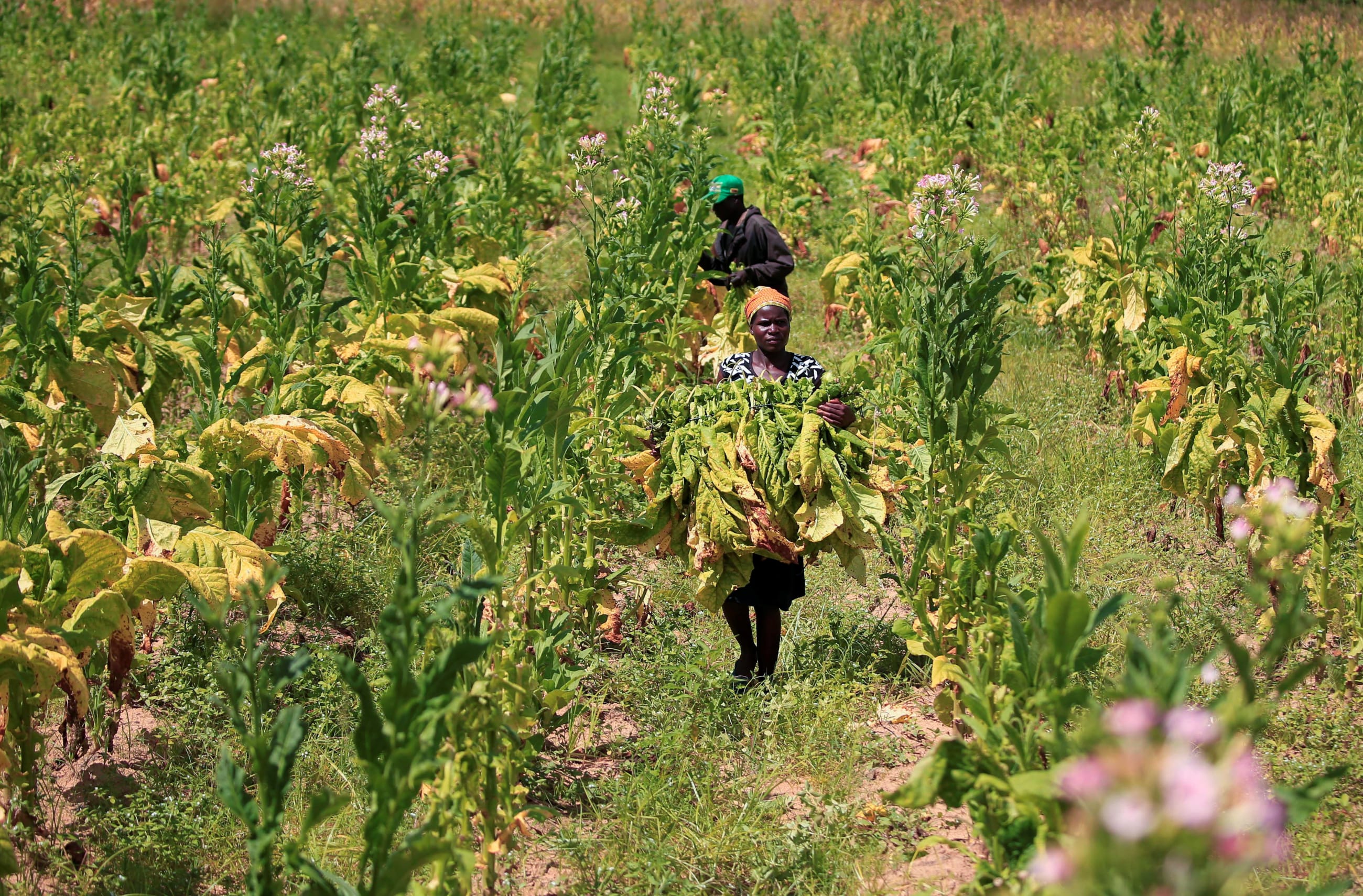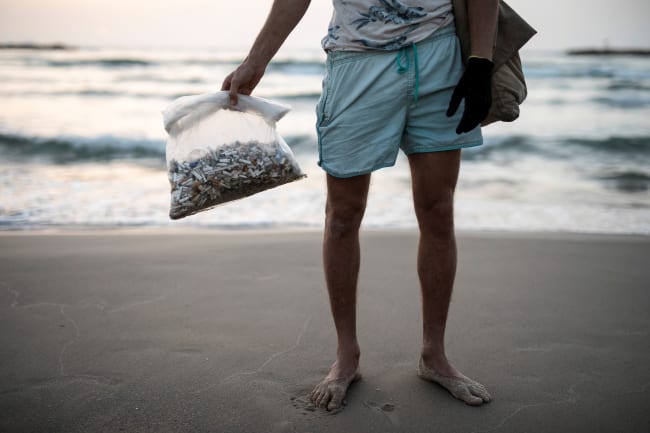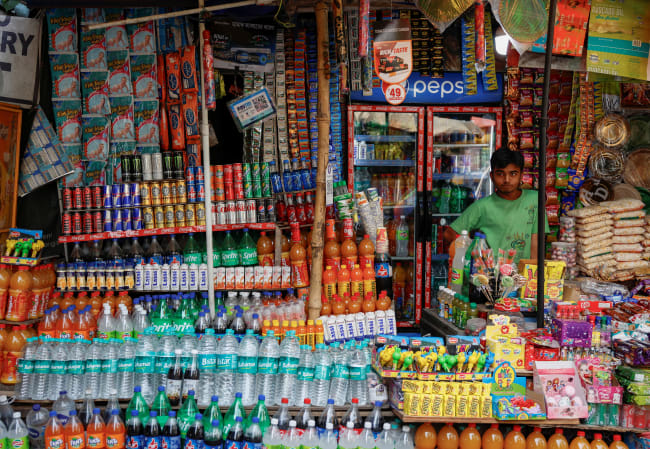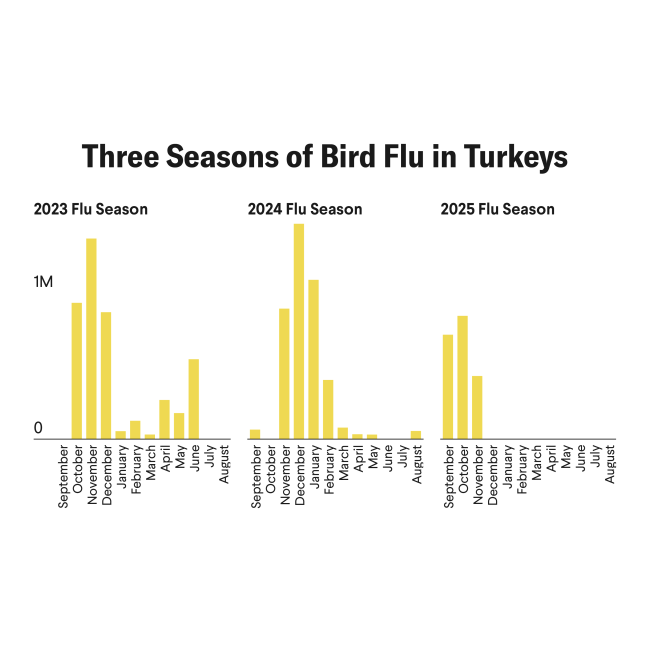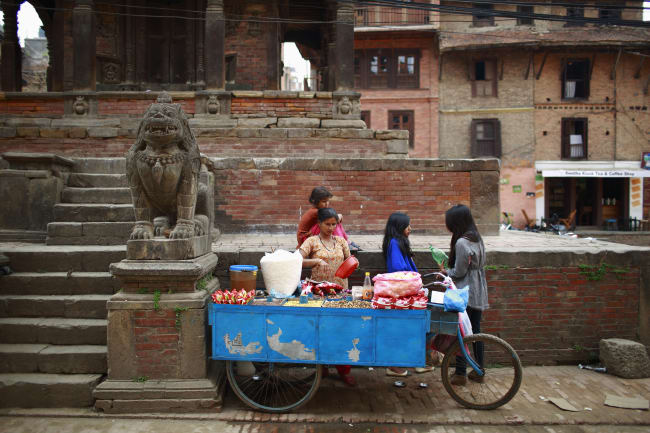During the Great Depression, the U.S. government addressed challenges concerning food insecurity by highlighting the urgent need for transitioning away from tobacco farming and emphasizing the potential for sustainable agricultural practices to combat food scarcity and ensure a more resilient food system. The following excerpt from a film distributed in the Midwest explores the detrimental impact of tobacco farming on food security during that time.
Here is Tobacco Land.
Land of lost hope,
Land of broken promises,
Land of broken lives.
Land of tired and tortured bodies, disease ridden, phla.
…A crop that pays in cash and sad eyes and scabber skins and half-empty bellies and weak muscles.
You can't eat tobacco.
Food security remains a critical issue in many countries. A recent report shows that nearly one-fourth of the population in fifty-eight countries—roughly a quarter billion people—experienced acute food insecurity in 2022. Perplexingly, on land that could otherwise be used to grow food for the world's food-insecure population, countries have enabled the tobacco industry to thrive. For this reason, the World Health Organization (WHO) has declared a call to action: "We need food, not tobacco."
Current State of Food Insecurity
A recent survey conducted across twenty-one countries three years after the COVID-19 pandemic confirmed that many people still lack access to adequate nutrition. Food insecurity (defined as respondents saying that they "often" or "sometimes" didn't have enough to eat or the kind of food they wanted) was lowest in Italy and Japan and highest in Nigeria, South Africa, Colombia, and Indonesia.
Food Insecurity by Country
How would you describe the food eaten in your household in the past thirty days?
Why Tobacco Farming Is Common
Despite the persistence of food insecurity around the world, tobacco farming continues. Many countries find tobacco farming attractive from a comparative advantage perspective. According to this theory, countries that are good at growing tobacco should grow and sell it. With the money those countries make from tobacco, they can buy food and other commodities they are less efficient at producing. However, the prices that farmers can get for their tobacco leaf tend to be volatile, and when tobacco falls in value, it doesn't generate the income or revenue that the tobacco industry falsely claims. Planting tobacco relies exclusively on beneficial market forces, and when prices in the tobacco market are struggling—a phenomenon that occurs frequently—tobacco farmers have few economic alternatives because they cannot feed their crop to their families.
Kenya
In the 1960s, British American Tobacco convinced government officials and farmers that tobacco farming was the path to economic success in Kenya. Tobacco cultivation subsequently skyrocketed. Today, approximately fifty-five thousand farmers grow tobacco in Kenya, but the industry makes up only 0.03 percent of GDP. The rise in tobacco farming also came with a wide range of environmental and health problems, including deforestation, soil degradation, water pollution, pesticide overuse, exposure to dangerous nicotine levels, and child labor.
Kenya, however, is an important example of strong governance and was one of the first countries to ratify the World Health Organization (WHO) Framework Convention on Tobacco Control, in 2004. In March 2022, the WHO launched the Tobacco-Free Farms initiative in partnership with the World Food Program, the Food and Agriculture Organization, and the Kenyan government. The initiative encourages farmers to stop growing tobacco and shift to other crops, such as legumes, and trains farmers in good agricultural practices, improves access to quality inputs such as certified seeds and fertilizers, and provides postharvest support, including a ready market for alternative crops. This support enables farmers to cease tobacco-growing agreements with the confidence that they will have a long-term market to make their transition sustainable and is already earning farmers more income.
Approximately fifty-five thousand farmers grow tobacco in Kenya, but the industry makes up only 0.03 percent of GDP
This Tobacco-Free Farms initiative also targeted one of the main reasons that farmers choose and continue to grow tobacco: there is a ready market for it that does not exist for many other crops. Farmers know that if they grow tobacco, they will be able to sell it. In many countries, particularly in most tobacco-producing low- and middle-income countries, farmers enter pre-growing contracts with tobacco leaf-buying companies and use inputs such as seeds, fertilizers, and pesticides, provided at above-market cost to grow their tobacco crop. These contracts require farmers to sell the leaf back to the companies, often at exploitative below-market prices. This strategy is feasible for companies because agricultural supply and value chains tend to be weak in some of the top-producing tobacco locations—generally after significant disinvestment from governments—and companies know that farmers are vulnerable given the challenges of finding ready buyers for other crops.
Indonesia
Like Kenya, Indonesia is both food insecure and a top producer of tobacco. The government estimates that more than six hundred thousand families cultivate tobacco to sell. In many regions of Indonesia, tobacco farming is an important agricultural commodity, the tobacco industry promoting the idea that this will lead to economic prosperity. Research suggests, however, that growing tobacco is inversely related to income. The greater the area of land farmers dedicate to tobacco, the more likely they will have lower incomes.
In addition, focus groups conducted with Indonesian farmers found that many cited environmental viability as one of their motivations for growing tobacco. That tobacco can grow in Indonesia's climate — combined with farmers' difficulties accessing credit facilities and adequate markets for other crops, their relationships with the tobacco industry, and financial concerns — reflects the need for comprehensive support for farmers seeking to transition away from tobacco.

To help overcome those obstacles, Indonesia implemented a multisectoral strategy aimed at controlling tobacco as part of the Indonesian National Medium-Term Development Plan (RPJMN), in 2020, which included the labor and economic ministries. One branch of the RPJMN tobacco control strategy also incorporates strategies for mitigating the risks faced by farmers who do not want to transition away from tobacco crops; the other provides technical training and economic capital assistance, such as rural credit schemes, for those who wish to diversify their crop away from tobacco.
Pediatrician and former Indonesian Minister of Health Dr. Nafsiah Mboi emphasizes the importance of programs supporting farmers to transition away from reliance on tobacco farming and move toward well-managed alternative crops. Mboi says that this will "help improve family food security… particularly for pregnant mothers and children. Likewise, the reduction of smoke pollution — in public places and the home — will reduce childhood exposure to health-threatening passive smoking."
Despite efforts to reduce tobacco cultivation, stakeholders cite bureaucratic hurdles and corporate interference as obstacles to the full implementation of these strategies, illustrating larger governmental challenges for facilitating a shift toward food crop production and away from tobacco.
Transitioning from Tobacco to Food
Governments can take a proactive approach in building robust and resilient food systems by investing in sustainable agricultural practices, diverse crop rotations, and environmentally friendly production methods. Those investments reflect a shift in the world's response to food insecurity. As opposed to responding to food crises as they occur, the WHO is encouraging better prevention strategies and targeting interventions to address the root causes of food insecurity, including vulnerable food systems.
The lessons drawn from Kenya and Indonesia highlight also a need to responsibly facilitate the transition from tobacco agriculture to other crops and promote the creation of a more resilient agriculture system. From these case studies, clear recommendations emerge to encourage tobacco farmers to identify alternative crops, including
-
disallowing subsidies of any kind for tobacco farming;
-
establishing mutual partnerships between farmers and buyers of non-tobacco crops with collective buy-in;
-
establishing corporations or community enterprises for farmers to help them obtain credit and give them better leverage with large-scale buyers;
-
devoting government resources to identifying viable alternative food crops or developing knowledge-sharing platforms for farmers to better disseminate such knowledge among themselves;
-
providing or reallocating existing agricultural extension services to promote non-tobacco crops.
Governments, however, should be cautious in having farmers rush to other agro-industrial crops. Because the industries for some alternative crops, including cotton or palm, have a history of exploitative practices akin to those used in tobacco farming, encouraging nutrient-rich and environmentally friendly food crops is necessary to promote a resilient agricultural system.
As the world grapples with the challenge of market incentives encouraging the production of tobacco, one of the world's leading health risks, in lieu of urgently needed food production, governments, nongovernmental organizations, and intergovernmental organizations should help facilitate the shift away from tobacco to food crops by helping connect farmers to consumers. Relatedly, boosting relevant information flows through exchanges by mobile and smartphones will equip farmers with essential information, such as wider market prices for their non-tobacco goods and inputs. Reintroducing agricultural extension services for non-tobacco food crops would give skills and confidence to farmers to shift away from tobacco. Rural credit schemes would provide much needed resources at the beginning of the growing season and give farmers opportunities to try crops other than tobacco that do not require capital at the start of the season. Where feasible, government investment in introducing or improving existing irrigation would increase yields, quality, and the range of non-tobacco crops that can be grown. Ultimately, these initiatives are only one set of strategies in the fight for global food security. Stepping away from tobacco agriculture is a necessary step toward a more sustainable and secure food system today and for generations to come.
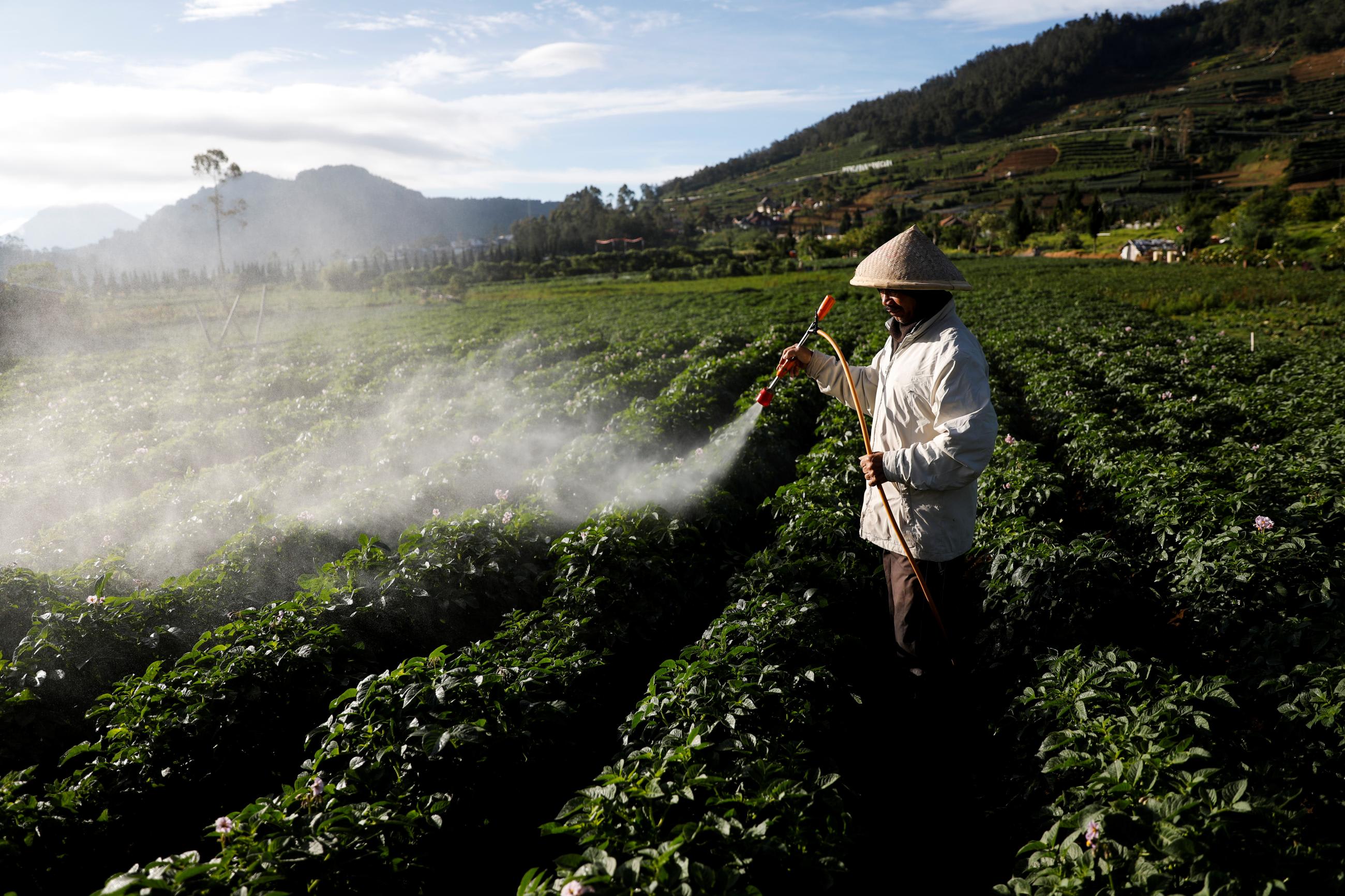
AUTHOR'S NOTE: Professor Emmanuela Gakidou at the Institute for Health Metrics and Evaluation and Simone St Claire at the World Health Organization contributed to this article. Additionally, the authors thank Dr. Nafsiah Mboi, former Indonesian minister of health, for commenting on food security in Indonesia and Sneha Nicholson for fact-checking the article.
EDITOR'S NOTE: Louisa M Johnson, Gabriela F. Gil, and Professor Emmanuela Gakidou are employed by the University of Washington's Institute for Health Metrics and Evaluation (IHME). IHME collaborates with the Council on Foreign Relations on Think Global Health. All statements and views expressed in this article are solely those of the individual authors and are not necessarily shared by their institution.
